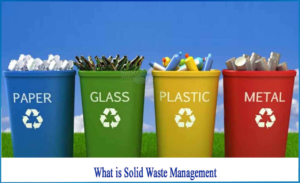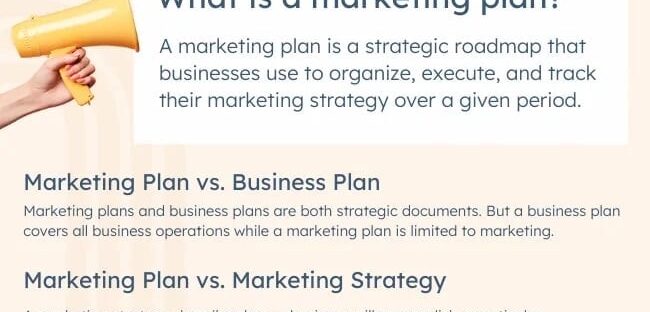Waste management includes using tools and methods to reduce the negative impacts of human waste on the environment. Baltimore County Waste Management also helps protect public health and preserve natural resources.
The most desirable method of waste management is prevention through reuse and recycling. This is a great way to save money and prevent environmental harm.

Poor waste management is the cause of many environmental problems, ranging from air pollution to the contamination of water and soil. It can also affect human health by exposing people to harmful substances through the consumption of foods, fruits, and vegetables grown in polluted soils. The improper handling of different types of waste materials also results in serious medical issues, such as asthma and other respiratory conditions.
To avoid the negative effects of waste, you must focus on prevention. This involves limiting the amount of waste that you create and being more conscious about your consumption habits. It also includes using alternative products, such as reusable bags, and choosing items with less packaging. You can also use recycling as a means of waste reduction, which focuses on taking used products and making them into new ones.
The goal of waste minimization is to reduce the amount of waste you generate by utilizing alternative methods and reducing your use of natural resources. This can be achieved through the “3Rs” — reduce, reuse, and recycle. By implementing these practices, you can minimize the environmental impacts of your business and save money at the same time. You can also use extended producer responsibility, which requires manufacturers to add all environmental costs to the market price of a product and take them into account during production. This can incentivize them to design products with sustainability in mind.
The first step of a sustainable waste management program involves reducing the amount of waste you generate. This is done by modifying your business’s operations to minimize the need for wasteful consumption of materials and resources. For instance, you can encourage employees to only print documents when necessary and change printer settings to default to double-sided printing to save paper. You can also promote reusable containers for food, drink and other supplies to reduce the amount of trash produced.
Getting people to comply with sustainable waste management procedures can be difficult. This may be because of lack of information, false beliefs, or social or economic barriers. For example, people may be resistant to sorting their waste because they find the process tedious or time consuming. In addition, some communities do not have access to proper waste collection and disposal services.
Once you have reduced the amount of waste you generate, it is important to make sure that any residual waste that you do produce can be recycled. This is done by promoting recycling awareness through educational campaigns and making it convenient for residents to recycle. You can also provide incentives to promote participation, such as pay-as-you-throw recycling fees and separate bins for organics and recyclables.
In addition, you need to ensure that your waste management procedures are in compliance with local and national laws. This can be challenging if you rely on manual data collection, which leaves room for error.
It is a common belief that recycling is the best way to reduce waste, but it may not be the only solution. Several other methods of waste management are important, including reducing the amount of waste we produce by buying second-hand products, avoiding plastic bags, repairing and reusing items instead of throwing them away, and choosing sustainable goods.
Many communities offer curbside pick-up for organic waste, or residents can drop off their recyclables at various locations around the city. Some communities also host special waste collection events or have drop-off sites for larger items such as appliances and electronics.
Reducing the amount of waste we generate will help save natural resources and decrease pollution and emissions. For example, recycling glass bottles cuts down on the need to mine and process new raw materials. This saves energy, prevents water and air pollution, and reduces the need for landfill space.
In addition to saving resources, recycling can also create jobs. It is estimated that in a single year, recycling creates 757,000 jobs and pays $36 billion in wages. This makes it a vital part of the economy. It also reduces the need to harvest or extract raw materials from the Earth, which can cause environmental problems like habitat destruction and soil contamination. In addition, recycled materials are often more affordable than their virgin counterparts, which can lower the cost of finished products and make them more affordable for consumers.
The Resource Recovery model focuses on turning waste into secondary raw materials or energy, rather than simply avoiding disposal of the material. It has two main aspects: remanufacturing and recycling. Remanufacturing, which includes reworking, repairing, refurbishing and washing used products or materials, stretches their useful lives and avoids the need for new resources to be extracted to make replacements. Examples include using reusable coffee mugs instead of single-use disposable ones, or encouraging employees to use printer settings that allow for double-sided printing to save paper.
Recycling, which involves converting waste into usable materials by processes such as reprocessing into similar or different products and incinerating to produce power and heat, is a good alternative to landfilling and should be considered after a company has exhausted all the other options. The EPA and environmentalists agree that this is the second best option in the waste hierarchy, after reduction (source reduction).
Finally, a third option is to convert discarded materials into energy, which can be done through a variety of thermochemical and biochemical processes, such as incineration with energy recovery, gasification, pyrolysis, anaerobic digestion and landfill gas recovery. This is often performed by the informal sector, where hundreds of thousands of waste pickers in earn income from obtaining and selling scrap. This option has some overlap with the Energy Recovery model and should be integrated into formal SWM systems.
Waste incinerators convert solid waste into heat and electricity using a combustion process. Some types of industrial furnaces also use this technology to recover energy and materials (cement kilns, lightweight aggregate kilns, smelting furnaces). Modern waste incinerators typically emit no harmful odors or visible smoke and produce only small amounts of fine ash. Some of the ash is reused in road construction or as fill material, but much of it is landfilled.
Communities that choose to build or expand waste incineration facilities must weigh the potential benefits against environmental, social, and economic costs. Incinerators require a significant investment of capital and operating funds. They generate income mainly from tipping fees paid by waste haulers and from the sale of electricity.
The public health impact of waste incineration has been the subject of extensive research, especially in where incinerators are common. Some studies have linked particulate emissions from incinerators to miscarriages in pregnant women and other health effects.
Local residents may experience stress and depression if they are involved in protracted efforts to fight the construction or expansion of an incinerator. They may feel a loss of self-worth, status, and security if they must take on multiple roles in the struggle to oppose a facility. Others may be dissatisfied with the quality of their community when property values are affected by a controversial facility. This is particularly true if the facility is constructed in their neighborhood.
The disposal of waste is a complicated process that involves many factors. It includes collection, transport, treatment, and disposal of all types of solid and liquid wastes. It also includes monitoring and regulation of the waste management process.
The first step in waste management is waste minimization, which is the effort to reduce the amount of waste that is generated. This is accomplished by changing the design and fabrication of products and processes. This can be done by using recycled materials or by reducing the toxicity of existing products.
Another waste management method is landfilling, which involves placing waste in a landfill or surface impoundment. This is a problem because it can pollute water and soil with hazardous chemicals that can harm plants and animals. It can also cause respiratory problems in humans.
There are several ways to dispose of waste, including recycling, incineration, and resource recovery. Waste-to-energy (WtE) is a form of waste disposal that converts non-recyclable waste into energy. It can be done through various processes, such as incineration with energy collection, gasification, pyrolization, and anaerobic digestion. This is an alternative to fossil fuels, which helps to reduce carbon emissions and make our environment better. It is also important to hire a waste management company that can provide regular collection and transportation of all types of waste. This can save your business a lot of money and prevent the environment from being harmed.
